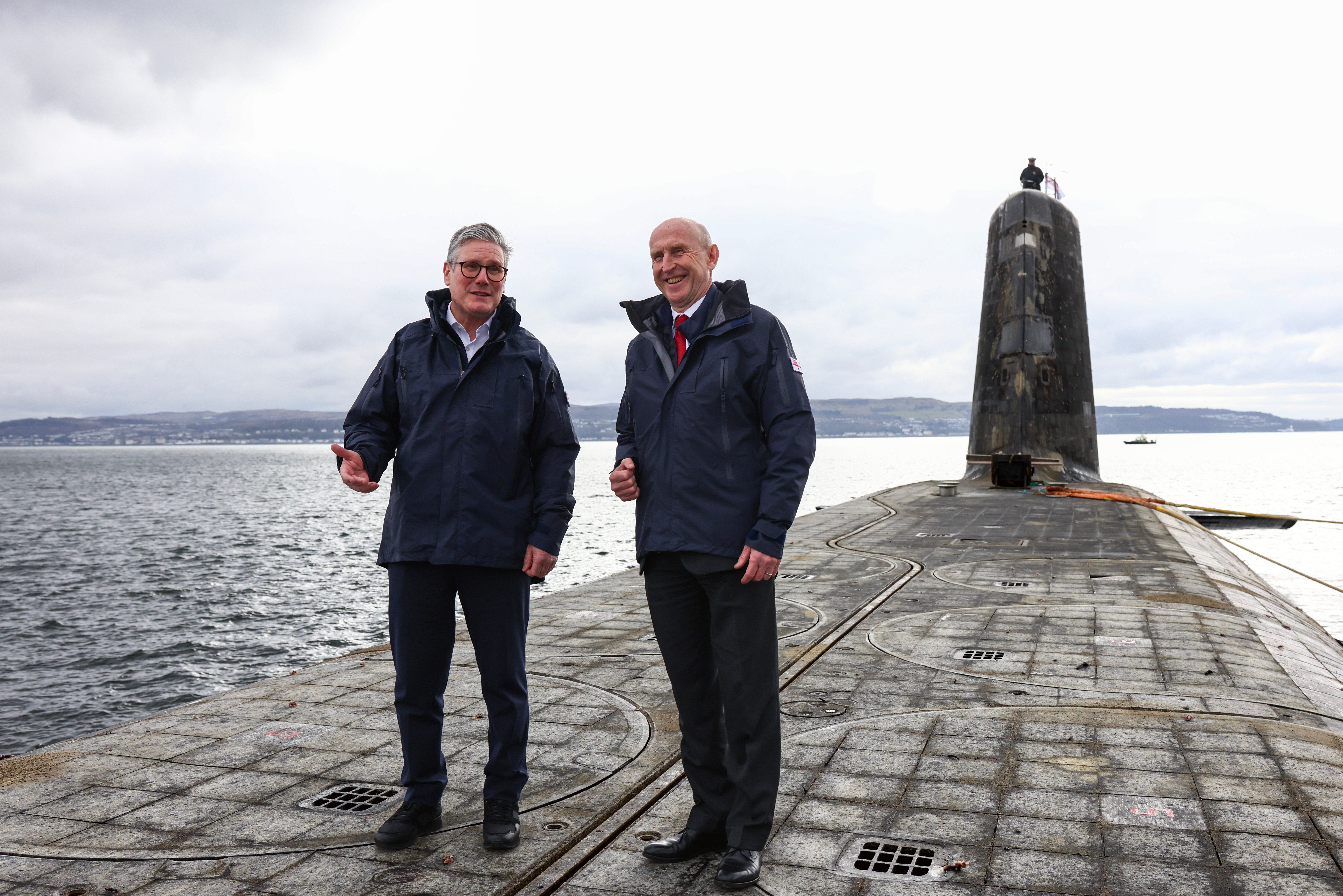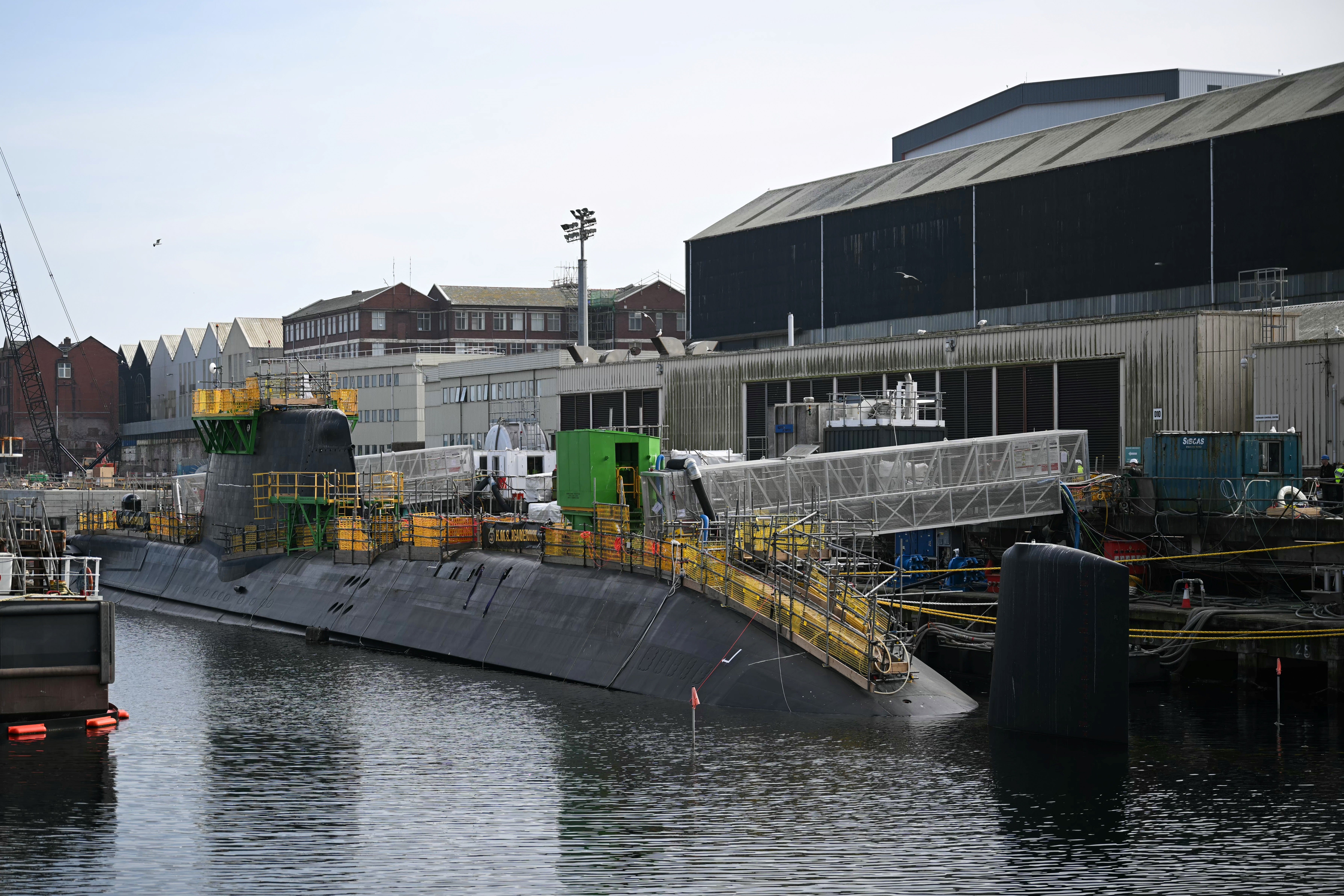ARTICLE AD BOX
Britain will build up to 12 new nuclear-powered submarines, Sir Keir Starmer will announce as he unveils his much-anticipated defence review.
In a bid to “ensure the UK rises to the challenge” of growing global security threats, the prime minister will say that the 130-page review is a “radical blueprint” signalling a “wave of investments” into military infrastructure and weaponry.
An extra £15bn will be spent on new nuclear warheads for the UK’s nuclear deterrent.

The plans will significantly increase the UK’s conventionally armed, nuclear-powered submarine fleet, with the new vessels built under a joint deal with the US and Australia, known as the Aukus partnership.
Here’s all you need to know about the UK’s fleet of nuclear-deterrent submarines, and the proposed plans for its future:
How many submarines does the Royal Navy currently have?
The Royal Navy currently operates nine submarines, including five Astute-class conventionally armed nuclear-powered attack vessels. The Astute class is Britain’s largest and most advanced fleet of submarines.
The remaining four are Vanguard-class ballistic missile submarines (SSBN), which carry the UK’s Trident nuclear missile system.
A new group, the Dreadnought class, will be introduced in the early 2030s. These will be both nuclear-powered and ballistic missile-armed.
How many submarines will the UK have in the future?
Two further Astute-class submarines, HMS Agamemnon and HMS Agincourt, are set to enter service in late 2025 and late 2026 respectively.
Agamemnon is currently going through trials with the Royal Navy as part of a test and commissioning programme, while Agincourt remains under construction.
As part of the joint defence deal between the US, Australia and the UK - known as Aukus - the UK is set to significantly boost its fleet of submarines following the defence review.
An added 12 submarines would bring the UK’s fleet up to more than 20 in total. This remains far smaller than the US’s fleet of 71, and China and Russia’s fleets of 66 each.

How powerful are the UK’s submarines?
The Astute class is the latest class of nuclear-powered attack submarines and is constructed by BAE Systems Submarines.
Submarines of this class can fit dozens of weapons - up to 38 - and are armed with Tomahawk IV cruise missiles, which can strike targets at a range of well over 1,600km away.
But the UK’s nuclear deterrent is found in the four Vanguard-class boats, which use the Trident missile system. Each boat can carry up to 16 Trident missiles, which can carry up to 12 nuclear warheads each.
The Dreadnought class will be both nuclear-powered and ballistic missile-armed.
Where are they kept?
The Royal Navy Submarine Service base is found in HMNB Clyde, in Scotland, known by Navy personnel as Faslane. It is 25 miles west of Glasgow and is found off the Firth of Clyde.
The base is one of Scotland’s largest employers, employing more than 6,000 military and civilian personnel.
Situated in a relatively secluded area, the base sits among deep waters with quick access to submarine patrolling areas in the North Atlantic.
What are they used for today?
One of the key roles of the submarines is to act as the UK’s nuclear deterrent.
“Our Vanguard class submarines - the UK’s strategic nuclear deterrent force - are continually in operation: patrolling the world’s oceans undetected, ready to strike at any time,” the Royal Navy website reads.
“Their presence alone sends the most powerful message to anyone who would do us harm,” it adds.
With the Astute class of ‘attack’ or ‘hunter-killer’ submarines, the Royal Navy can attack surface vessels, other submarines, and targets hundreds of miles inland.









 English (US) ·
English (US) ·